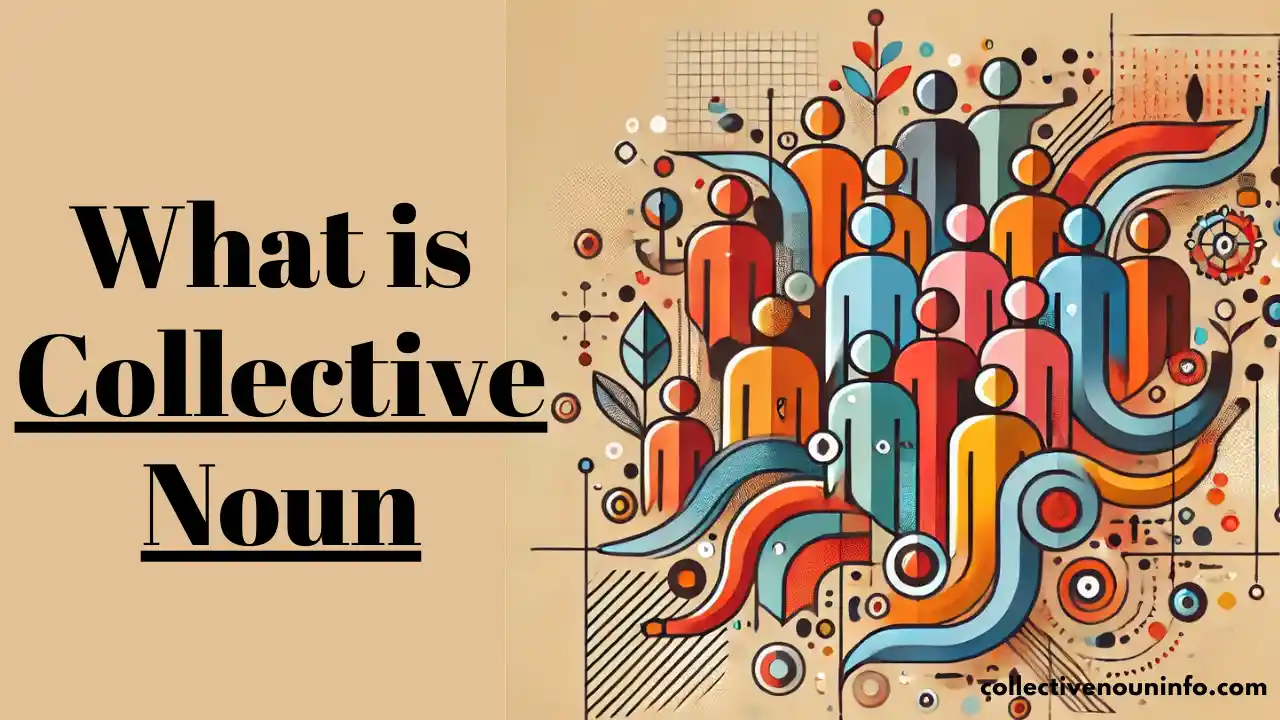Language is a powerful tool and its beauty lies in how easily we can explain big ideas in simple ways. One way this is achieved is through the use of collective nouns. These are special types of nouns that allow us to describe a group or collection of people, animals or things as a single entity. While the term collective noun might sound technical its use is incredibly common in our everyday conversations and writing.
Imagine watching a flock of birds flying across the sky or a class of students actively participating in a lesson. The words flock and class are collective nouns that represent a group of birds and students respectively. Instead of listing each individual these words help us refer to the entire group in one go. But what exactly makes a noun collective and why are these words so important Let us examine this closely to understand.
What is a Collective Noun
A collective noun is a word used to describe a group of individuals animals or objects as one single unit. It simplifies communication by providing a shorthand way of referring to a collection rather than its individual components. For example:
- Team refers to a group of players.
- Herd represents a group of cattle.
- Family indicates a group of related individuals.
These words make our language more concise and effective. Instead of saying The soldiers are standing together you can simply say The army is standing together.
Examples of Collective Nouns
Collective nouns are versatile and can apply to various categories. Here are some common examples
1. Groups of People:
- Family
- Jury
- Committee
- Band
- Audience
2. Groups of Animals:
- Flock (birds)
- Herd (cattle)
- Swarm (insects)
- Pack (wolves)
- Troop (monkeys)
3. Groups of Things:
- Bunch (grapes, flowers)
- Cluster (stars, grapes)
- Collection (stamps, books)
- Stack (chairs, papers)
- Fleet (ships, vehicles)
These words not only make communication smoother but also add flavor and variety to language.
How Collective Nouns Work
One of the unique aspects of collective nouns is how they interact with verbs. Depending on the context a collective noun can take either a singular or plural verb. This choice depends on whether the group is being treated as a single entity or as individuals acting independently.
For example
- Singular: The team is winning the match. (The team is seen as one unit.)
- Plural: The team are arguing among themselves. (The members of the team are acting individually).
This flexibility can sometimes confuse learners of English but it also highlights the depth and adaptability of the language.
Why Are Collective Nouns Important
Collective nouns play an essential role in making our communication clear and efficient. Imagine describing every member of a group individually instead of using one collective term it would be cumbersome and time consuming. These nouns provide a way to summarize streamline and add elegance to our language.
They also hold cultural and literary significance. Many collective nouns especially for animals have evolved over centuries and often carry a poetic charm. For instance:
- A murder of crows
- A parliament of owls
- A pride of lions
These terms not only serve their purpose but also add character and vivid imagery to writing and speech.
Conclusion
Collective nouns are an essential part of the English language simplifying our communication and adding depth to our expressions. They allow us to refer to groups efficiently whether we’re describing people animals, or objects. While their usage can sometimes be tricky especially with verb agreement understanding their purpose and function can significantly enhance your language skills.
Next time you come across a group of something think about the collective noun you would use to describe it. Whether it is a flock of birds a fleet of ships or a crowd of people these words remind us of how beautifully language can encapsulate the world around us.
